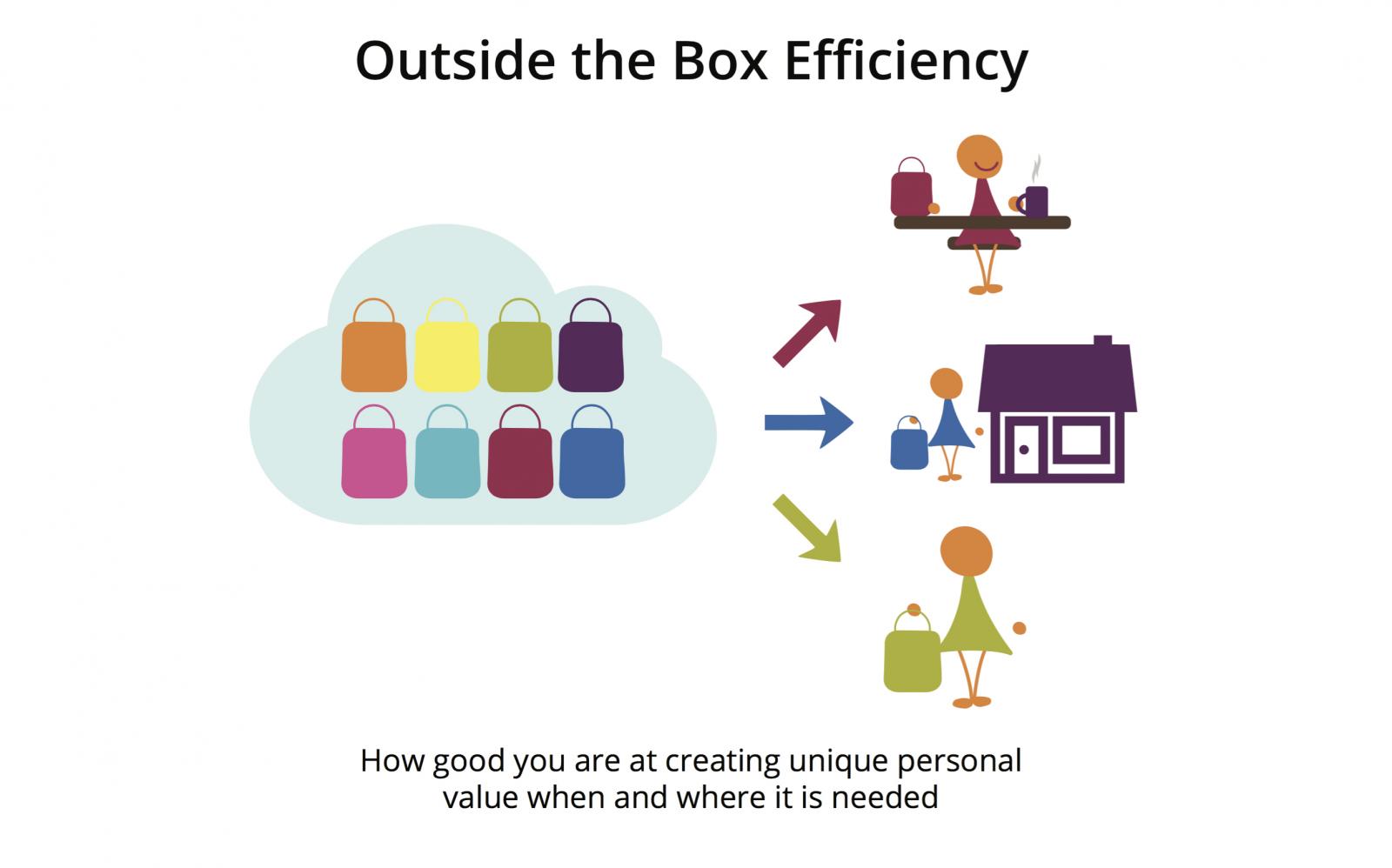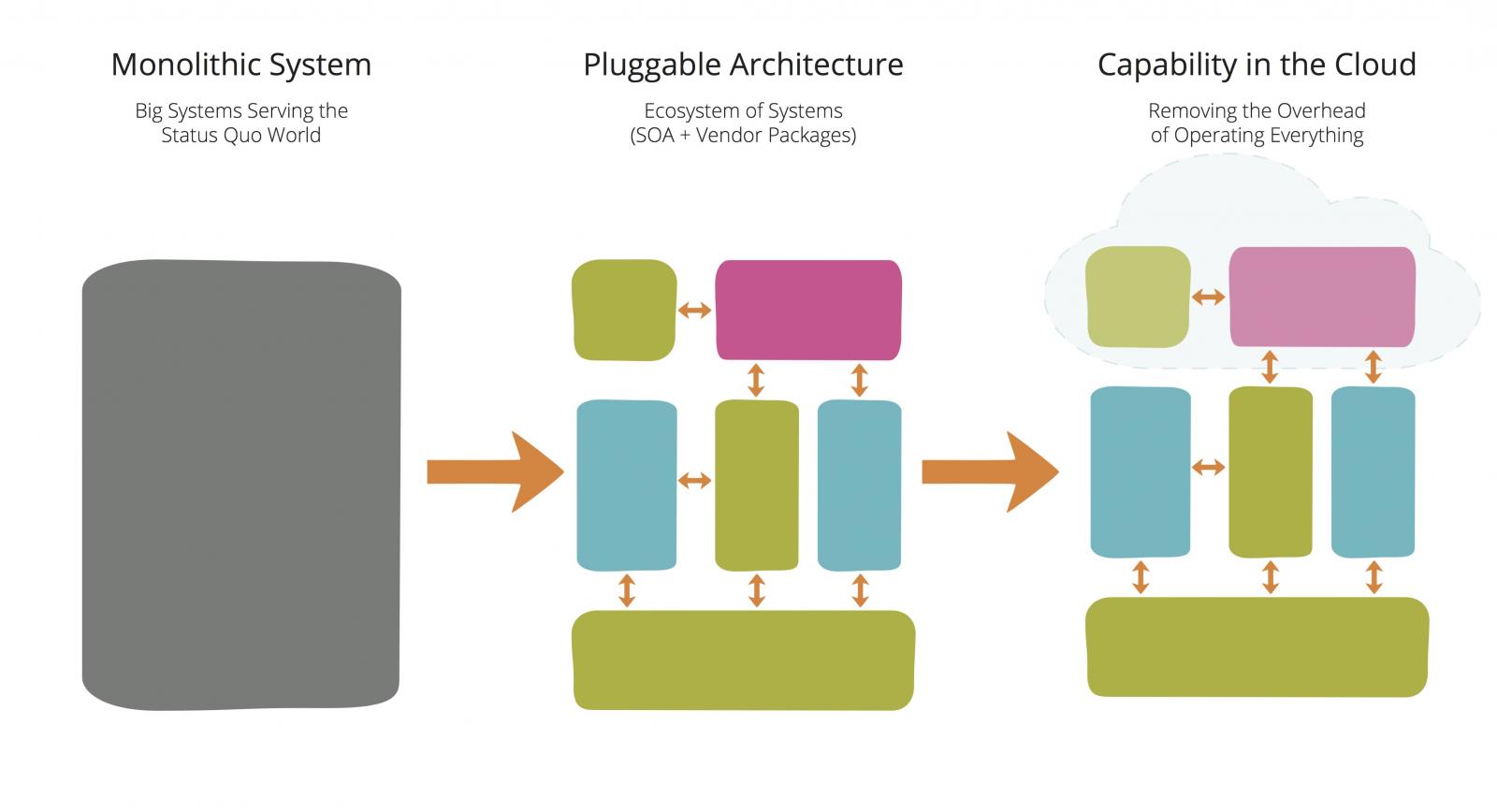
Part 4: Exploding The World of Retail Opportunity - Create the Responsive Supply Chain
This is the fourth of a five part series.
Read: Part 1 - It’s Time to Have a Crisis
Read: Part 2 - Follow the Product Home
Read: Part 3 - Individualized Value with Smarter Big Data
Much of retail’s history has been written by those who whipped their supply chains to deliver ever higher levels of performance. Walmart became the world’s largest retailer based on its legendary ability to source and place product inside its stadium sized boxes. Zara is positioned to take this a step further with its fast fashion strategy in clothing. And now Gap is also piloting the fast fashion model, proposing to run small “test” orders and increase the speed and responsiveness of its sourcing organization.
But what happens if we escape the traditional store, our retail box? If we pull apart the customer side of the business, the supply side will feel the shock. Following the customer home or delivering perfectly personalized value are opportunities that are not driven by the capability to deliver mass-produced goods to a mass market. They thrive instead when fed by a supply chain that enables responsive variety.
It will be more than better, smoother merchandising or just in time inventory management that allows retailers to escape the box. New hybrid retail models are already far less constrained by the necessity of keeping large inventory in their spaces. Look at Bonobos pioneering low inventory ‘Guideshops’. These are primarily showrooms for the inventory available online. Customers use the stores to deliver the tactile experience that only physical stores deliver, but the breadth of choice resides outside the box. As these models continue to proliferate, they will give rise to be a supply system that traditional retailers will scarcely recognize.
Begin by Redefining Efficiency
Efficient supply chains matter in a world where putting product on the shelf and managing inventory are at the center of operational excellence. The mass market has trained us to prize the ability to replicate a fixed selection of products and services cheaply at scale. The more product that can be poured into the store, the better.
It is a cost-per-unit definition of efficiency where variety comes at a cost. Every incremental SKU, every unpredictable customer whim, adds another bit of overhead.
Escaping the traditional store model requires a new view of efficiency. Outside the traditional box, what matters most is a firm’s ability to serve a wide variety of of unique, individual needs. This requires a definition of efficiency based on unit value, not unit cost. Efficiency still matters in a competitive marketplace, but it is the organization’s ability to deliver original value cheaply and “efficiently” to individual customers that drives success.

Creating Pluggable Architectures – Supply Chain Lego
For all the talk about customer engagement, if you look under the hood of a big retailer, a substantial share of the technology is made up not of customer-facing technology but of big monolithic supply side systems. Many of these legacy elephants are at or beyond the end of their natural life. This offers the chance to ask a strategic question. Should big backend systems be updated or replaced? Or, is this moment of re-investment a chance to completely reimagine the way that the supply chain is executed?
Feeding the incessant need for faster and cheaper by building better monoliths, may buy short-term wins in the box’s cycle of vicious competition, but it also traps the retail organization within the confines of the current narrow business model. Investing in a monolith is a liability for three other reasons:
- It’s a One Way Street: It’s built for current needs and current views of the business (i.e. inside the retail box). The complexity of these big integrated systems makes them fabulously difficult to change later.
- That’s Hideously Costly: Monoliths are famously time-consuming and costly to build and deploy. Often the cost and effort is so great that they never actually replace old legacy systems, and so the monoliths proliferate.
- With Big Risks: The track record for big all-encompassing technology projects is quite poor. The risk of project failure grows with the scope of the system.
Fortunately, a series of technologies are coming together to enable the demolition of the monolith and enable a far more flexible foundation on which to construct a responsive supply chain. The first of these is the evolution of Service Oriented Architectures (SOA). This is, in effect, the breaking up of monoliths into independent pieces, which in turn has enabled an explosion of technology vendors with more adaptable functionally-targeted solutions. These can be combined in an ecosystem of applications where individual parts can be swapped out and evolved along different paths.

Combine this with the cloud and you have the Platform As a Service (PaaS) model. Instead of having to set up and host on-premise systems (a huge task even for an out of the box software package), the cloud enables this operational overhead to be handled by others.
Inviting In Intriguing New Participants
With a new more flexible technical foundation, it becomes possible to invite new suppliers and collaborators. eBay and Amazon have fostered marketplace models where the barriers to becoming a supplier are vanishingly low. Interestingly, these open marketplaces also shift risks and responsibilities. Instead of taking ownership of forecasting and its associated inventory risk, these functions flow up the supply chain to the suppliers themselves.
It’s the start of a change, but these open marketplaces are still rooted in the original Retail Box. While the source of products has been democratized, the business model is still about selling things within the traditional retail model. However, combine this openness with the context-aware customer engagement described in earlier sections, and something genuinely different can occur.
For example, as the Internet of Things creates an ever smarter world around each consumer, previously dumb appliances can sense the ebb and flow of a family's life and understand preferences for things like organic fresh local produce. A smart refrigerator connected to the web, could become a new kind of shrewd retail buyer, with unfettered connections to a marketplace that increasingly operates in the Cloud.
While the average busy parent wouldn't casually break with their weekly grocery shopping routines, a smart fridge would be happy to patiently sift through a host of creative new buying options. In a Cloud enabled world, the refrigerator could locate a local farmer that only intermittently has fresh organic eggs for sale. Micro-suppliers like this wouldn't need a storefront, evocative brand or even a continuous presence in the market to sell to the fridge. Instead, the stainless steel buyer sitting in a kitchen can conspire with them to shatter the long supply chains serving centralized retail locations.
What started with the “farm to table” movement is now being replicated across a broader range of consumer and industrial goods. As consumers demand more personalization and greater transparency to the provenance of the products they use, a wide range of innovative tools that marry the sharing economy with access to providers will continue to proliferate.
Supplying Infinite Variety on Demand
As markets become based on individual moments in individual lives, suppliers will increasingly need to think about short-run, micro-scale production. This can be supported with a wide range of emerging tools. Here are a few:
- Maker Technology: Digital printing and other “maker” technologies are still in their early days, but they are positioned to disrupt these nimble supply chains with personalized products Custom-built knee implants, where “image to implant” techniques translate a body scan into an custom shaped body part, are already improving this common knee-implant surgery. When it becomes possible to routinely tailor perfectly personalized jeans as well as a replacement knee, the traditional store’s role of selecting and stocking product will become largely irrelevant.
- Supply Ecosystems: The emergence of tools to communicate real time demand creates the opportunity for organic networks of supply. Uber and Air BnB are the first high profile players in this space, where customers can not only signal demand, but also have real-time visibility to all available sources of supply. But any market with distributed, untapped assets is ripe for this model.
- Consumer Driven Investing: Going even deeper into the supply chain, crowdsourcing sites like Kickstarter and GoFundMe make it possible for would-be consumers to drive new products and services through direct investing. The customer jumps over the head of almost everyone in both the supply and investment chain to help create products that suit their particular fancy and desire.
Next … Pulling it All Together
What makes these models attractive to customers? They promise variety tailored to need. The businesses that are making waves with these strategies are the ones that have redefined efficiency around the fast, low cost, timely delivery of unique value.
Bring all these strategies together - following the customer home, delivering personalized value, and articulating a newly efficient supply chain of value - and the map of a new, deconstructed retail world emerges. Seeing this big picture is our next and final chapter.
Disclaimer: The statements and opinions expressed in this article are those of the author(s) and do not necessarily reflect the positions of Thoughtworks.














